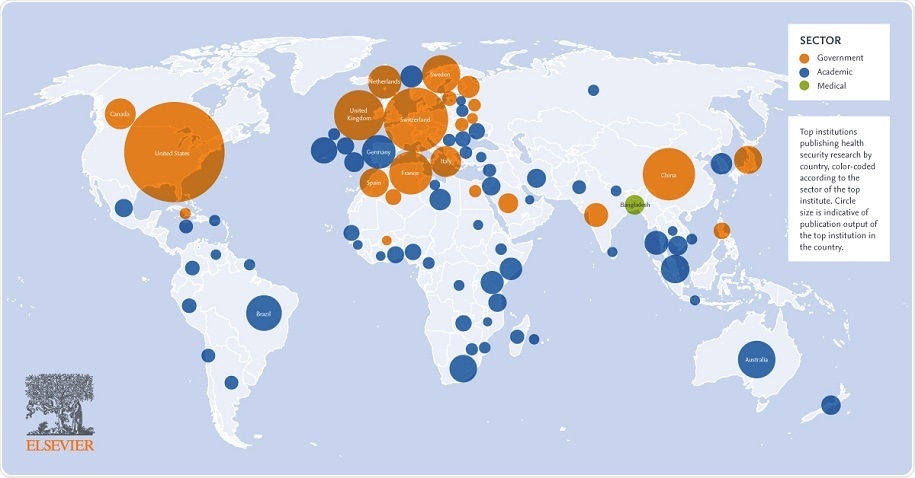Over the past two decades, the world has faced several infectious disease outbreaks. Ebola, Influenza A (H1N1), SARS, MERS, Zika virus and currently COVID-19 have had a massive global impact in terms of economic disruption, strain on local and global public health resources and, above all, human health.

A section of Elsevier’s infographic Global research trends in infectious disease.
Using SciVal and Scopus data from 1996 to 2018, Elsevier’s experts in data science, microbiology and public health have analyzed scholarly output, trending topics and top research organizations working to strengthen our understanding of and response to infectious disease outbreaks.
Highlights from the analysis are featured in this Elsevier infographic; interested media can also request underlying raw datasets.
Data, graphics and charts included in the infographic cover below topics and more
- Emerging infectious disease research has seen an average growth of 6.9% annually over the past decade.
- Following an outbreak of a disease, we see a sharp spike in disease-specific publications, showcasing the research community’s remarkable ability to quickly respond to public health needs. This is evidenced by a rise in publication counts following outbreaks of SARS, Influenza A (H1N1), Ebola and Zika virus.
- Among research aimed at understanding new outbreaks, a rise in publications specifically related to health security suggests an increased focus on public health preparedness.
- Seven of the top 10 research institutions publishing health security research between 2014 and 2018 are governmental organizations.
These and further findings will be presented during a free webinar on Monday, 30 March, at 17:00 CET | 16:00 GMT | 11:00 AM EDT.